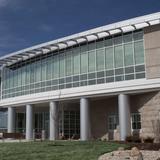School Highlights
Alexandria School of Scientific Therapeutics served 17 students (100% of students were full-time).
The college's student-teacher ratio of 2:1 was lower than the state community college average of 34:1.
Minority enrollment was 40% of the student body (majority Black and Hispanic), which was less than the state average of 51%.
School Overview
Alexandria School of Scientific Therapeutics
(IN) Community College Avg.
Carnegie Classification
Not applicable, not in Carnegie universe (not accredited or nondegree-granting)
Baccalaureate Colleges: Arts & Sciences Focus
Institution Level
Less than 2 years (below associate)
Four or more years
Institution Control
Private for-profit
Private, for profit
Total Faculty
8 staff
145 staff
Number of Programs Offered
1
19
Student Body
Total Enrollment
17 students
3,848 students
Student-Teacher Ratio
2:1
34:1
# Full-Time Students
17 students
1,083 students
# Part-Time Students
n/a
2,765 students
# Enrollment Undergraduate
17 students
289 students
# Full-Time Undergraduate Students
17 students
1,548 students
# Full-Time Graduate Students
n/a
5,260 students
# Part-Time Undergraduate Students
n/a
180 students
# Part-Time Graduate Students
n/a
35 students
Total Dormitory Capacity
8 students
196 students
% American Indian/Alaskan
n/a
1%
% Asian
n/a
2%
% Hispanic
3%
4%
% Black
3%
9%
% White
60%
49%
% Two or more races
3%
3%
% Non Resident races
31%
n/a
% Unknown races
n/a
32%
Diversity Score
0.54
0.65
College Completion Rate (Students who graduate in less than 4 years)
85%
58%
College Completion Rate (Students who graduate in 4 years or more than 4 years)
n/a
33%
Tuition and Acceptance Rate
% Students Receiving Some Financial Aid
44%
87%
Median Debt for Graduates
n/a
$12,000
Median Debt for Dropouts
n/a
$5,500
Acceptance Rate
100%
74%
SAT Reading
n/a
485
SAT Math
n/a
485
SAT Writing
n/a
465
ACT Composite
n/a
22
ACT English
n/a
21
ACT Math
n/a
21
Source: 2023 (or latest year available) Integrated Postsecondary Education Data System (IPEDS)
Frequently Asked Questions
What is the acceptance rate of Alexandria School of Scientific Therapeutics?
The acceptance rate of Alexandria School of Scientific Therapeutics is 100%, which is higher than the state average of 74%.
Recent Articles

How to Transfer from Community College to a Four-Year University in 2025
A step-by-step guide for community college students transferring to a four-year university in 2025 — updated strategies, data and expert insights.

Scholarships for Community College Students 2025
Explore updated scholarship programs, tuition data, and expert strategies for community college students in 2025.

The Rise of Technical and Vocational Training in 2025
Explore the 2025 surge in technical and vocational training—enrollment, policy, costs, and why this path is gaining ground for students and parents.






